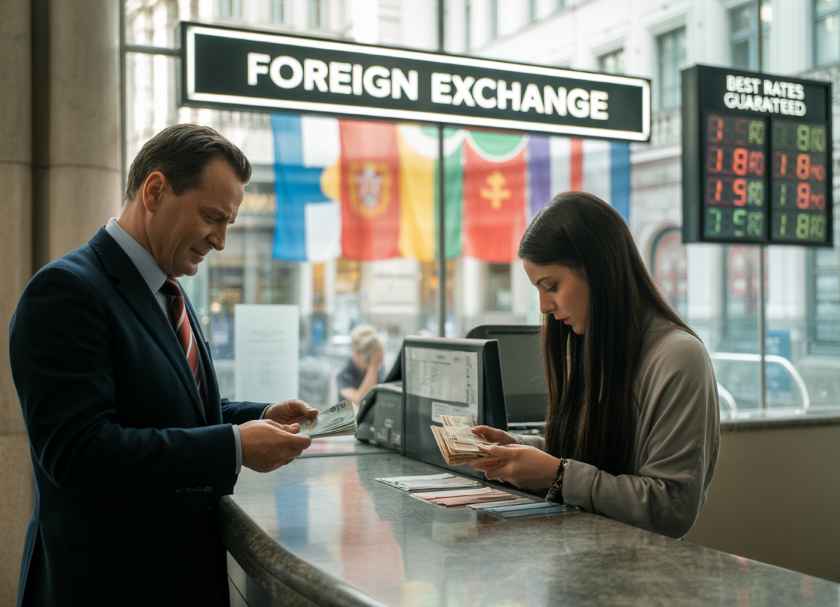Published on
August 11, 2025 |
The euro has surged to an all-time high of ₹102.3763 against the Indian rupee, as per the Reserve Bank of India’s reference rate released on August 7, 2025. This marks the steepest valuation of the euro in rupee terms, significantly impacting Indian tourists planning to visit popular European destinations such as Paris, Rome, Barcelona, and Amsterdam. The sharp rise in the euro’s value is expected to make travel to Europe more expensive for Indian nationals, adding pressure to their travel budgets for the remainder of the year.
Currency Volatility and Rising Travel Costs
The strengthening of the euro is a result of a mix of global economic factors, including market volatility, capital outflows, and a weakening demand for the rupee. Between January 1 and August 7, 2025, the euro has appreciated by 15% against the rupee, which translates into an increase in the cost of travel and tourism services in Europe for Indian tourists. Hotel bookings, flights, meals, and other essential travel expenses priced in euros are now considerably more expensive.
European cities that were once perceived as affordable travel destinations for Indian visitors may now see a reduction in footfall due to the rising costs. The increase in exchange rates has made popular destinations like Paris, Rome, Barcelona, and Amsterdam more expensive for travelers from India. Attractions in these cities, which attract millions of tourists annually, could become financially out of reach for many who had planned their trips with the assumption of more favorable exchange rates.
Impact on Airfares and Accommodation
One of the most immediate impacts of the surge in the euro is the rise in the cost of airfares. Airlines that operate flights between India and Europe, including Air India, Lufthansa, and Emirates, may increase their prices to account for the higher cost of services priced in euros. This could mean that many Indian travelers will have to reconsider their travel dates or look for more affordable alternatives.
Similarly, hotel accommodation costs in Europe, which are primarily priced in euros, have become more expensive. Travelers looking to stay in major European cities may now face significantly higher room rates, impacting their overall travel experience. Budget options, such as hostels or mid-range hotels, will also be subject to price hikes due to the increased cost of services and local taxes.
Increased Cost of Daily Expenses
Beyond airfares and accommodation, the cost of daily expenses, such as meals, transportation, and sightseeing, has also increased for Indian tourists. In popular tourist spots like the Eiffel Tower in Paris, the Colosseum in Rome, and the Sagrada Familia in Barcelona, entrance fees are priced in euros, which means that Indian travelers are now paying significantly more for these experiences than they would have just a few months ago.
Public transportation, taxis, and Uber services in major European cities will also become more expensive due to the increased value of the euro. Additionally, tourists may find themselves paying higher prices for dining out at restaurants and cafes, which could lead to budget adjustments for those planning to visit multiple countries within the eurozone.
Economic Factors Behind the Euro’s Surge
The rise in the euro’s value against the rupee is part of a larger trend influenced by global market conditions. In recent months, the Indian rupee has faced several challenges, including lower demand for Indian exports, higher inflation, and increased capital outflows. At the same time, Europe’s economic stability, combined with a relatively stronger outlook for the eurozone, has led to the appreciation of the euro.
According to the Reserve Bank of India, the continued depreciation of the rupee has led to an overall increase in the cost of foreign travel for Indian nationals. This trend is expected to persist, potentially further raising the cost of overseas vacations and prompting Indian tourists to reconsider their travel plans for the near future.
Adjusting Travel Plans and Alternatives
For Indian tourists looking to make the most of their trips despite the soaring costs, one potential solution is to adjust travel plans by choosing less expensive European destinations. Eastern Europe, in particular, offers a range of more affordable cities compared to the traditionally expensive Western European capitals. Cities like Budapest, Prague, and Krakow, where prices are still lower than those in Paris or London, may become more attractive to budget-conscious travelers.
In addition, tourists may explore options for booking travel packages that bundle airfares, accommodation, and tours, as these may offer better deals in light of the higher exchange rate. Many travel agencies are offering customized packages to help mitigate the effects of rising costs for popular European destinations.
Long-Term Effects on Tourism and Travel Preferences
The rise of the euro could also lead to long-term shifts in Indian tourist preferences. As the costs of European holidays increase, Indian travelers may look to other parts of the world for more affordable travel options. Destinations in Southeast Asia, the Middle East, and even domestic tourism within India could see an increase in demand, as travelers adjust their preferences to maintain their budgets.
The rise in the euro’s value is also likely to affect the business of travel agencies and tour operators, especially those focusing on European itineraries. These businesses may need to adapt their offerings, focusing on providing more cost-effective solutions to Indian tourists while still offering desirable European experiences.
Conclusion
The euro’s record high against the rupee is reshaping the landscape for Indian travelers planning trips to Europe. With rising airfares, accommodation costs, and daily expenses, European tourism has become significantly more expensive for Indian tourists. While some may look for alternative destinations within Europe or opt for other global regions, the long-term impact of the euro’s surge may lead to a reduction in Indian tourists visiting European destinations. Tourists and the travel industry alike will need to adjust their expectations and strategies to navigate the changing economic landscape.
